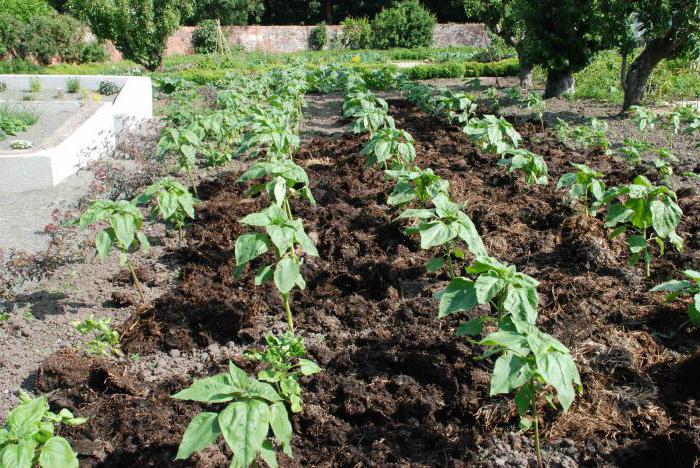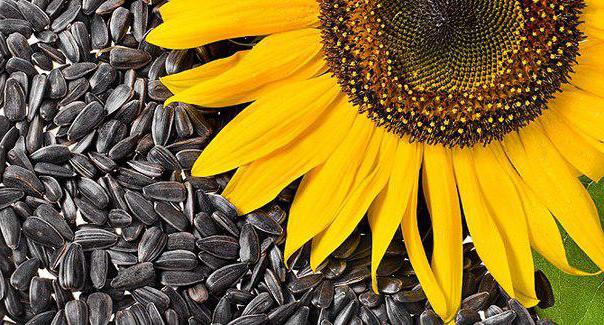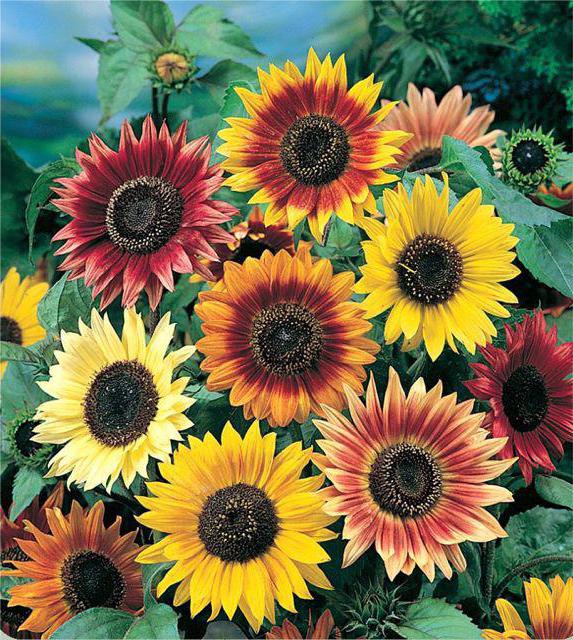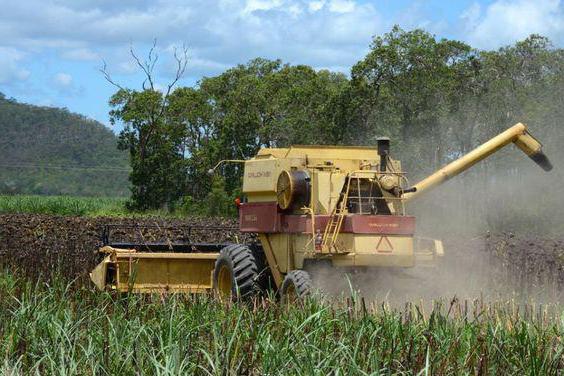Sunflower is a very common crop in agriculture. Oil is produced from the seeds of the plant, they are used in cooking, their medicinal properties are used in medicine. What modern sunflower growing technologies are used? What varieties and hybrids of culture are more popular? What conditions are necessary for growing sunflower? Read about all this in an article.
Zero sunflower growing technology
Until recently, the traditional system was used in agriculture, that is, before sowing, the soil was treated mechanically using various aggregates and machines. This is necessary so that the soil becomes loose, which ensures the further operation of the seeders during seed placement in the soil. During plowing, the soil is mixed with plant debris on its surface, the field becomes free from weeds. But machining requires a lot of time, labor and resources. And most importantly, it leads to erosion processes in the soil.

The technology of growing sunflower in the traditional way has long become obsolete. It was replaced by new, more modern methods. One of them is the cultivation of sunflower according to zero technology, the main principle of which is the rejection of plowing. The soil should not be disturbed, and its structure should remain integral.
How to prepare the ground?
When using the traditional method of growing crops, including sunflower, sowing of seeds is carried out in the soil with any surface. Zero technology for growing sunflower is possible only on a flat surface to ensure the correct operation of the seeder. Otherwise, the seeds will be planted very deeply or finely in the soil. In the first case, they will sprout late, and in the second they will take root for a long time. All this is the reason for the decline in productivity. Therefore, the soil surface must be leveled using cultivators or other equipment.
This technology does not require burning or burying plant debris from the field. They are crushed and scattered evenly on its surface, protecting the soil from erosion, retaining moisture in it. In the future, plant debris will decay, fertilize the soil, thereby increasing its fertility. The result of this process is a high yield of seeds.
Sowing Features
The technology for growing sunflower using the zero method largely depends on crop rotation, in which the main role is assigned to siderata. With their use, the soil is much improved. They fight weeds, replace plowing.
Seeding in the soil is carried out with special seeders, which differ in wide-spreading devices, due to which fuel and time spent by people and machines on sowing are saved.
Benefits of Zero Technology
A sunflower growing system using this method has the following advantages:
- Resources are saved - fuel, fertilizers, labor and amortization costs, time.
- Increased profitability.
- The fertile soil layer is preserved and restored.
- Soil erosion decreases or completely disappears.
- Moisture accumulates in the soil, so that the crop is less dependent on the weather.
- Yields are increasing.
disadvantages
The technology of growing sunflower in a zero way is unsuitable for soils that are very wetland or excessively moist. Such soils need good drainage or mechanical treatment.
- The disadvantage of this technology is the obligatory observance of all agrotechnical measures, such as crop rotation, the use of certain varieties of pesticides, optimal norms for their introduction into the soil, and much more. Moreover, all this should be selected individually for an agricultural enterprise, taking into account climatic features, soil composition and many other factors.
- Areas with an uneven surface need to be leveled, which entails additional material investments.
- The upper layers of the soil over time accumulate pathogenic bacteria and pests. Therefore, additional funds are needed to protect plants with chemicals.
What is granstar?
This is a herbicide that has a highly effective action in the fight against weeds with a dicotyledonous structure. For greater efficiency, it is advisable to use it when the weeds appear three or six leaves. This herbicide is compatible with liquid fertilizers and pesticides.

Granstar does not pose a danger to humans, animals, soil, the environment and the cultures themselves. Its effect extends to enzymes that are of plant origin. This tool has a selective ability. It destroys plants with a stable root system, which other drugs can not cope with. Granstar is a water-soluble capsule, which contains tribenuron-methyl.
Sumo sunflower cultivation
In the traditional cultivation method, herbicides are used to destroy weeds with dicotyledonous and monocotyledonous structures. But their effectiveness in an arid climate is declining.
However, there is a modern technology for growing sunflower under Granstar, which is called sumo technology. Here the Express herbicide is used, capable of controlling the appearance and growth of weeds. The technology of express growing sunflower is such that soil moisture does not affect the effectiveness of the drug. The substance is absorbed by the roots and leaves of weeds, but has no effect on sunflower.
Excessively sensitive weeds, after being treated, stop growing rapidly after a few hours. But there are more resistant weeds. They do not die, moreover, they remain green. But do not be afraid, they will no longer compete with cultivated plants.
An “express” is used to kill newly emerged weeds. This drug is not recommended if sunflower suffers from waterlogging, drought, temperature changes, damage by pests, frosts and other natural disasters.
Intensive sunflower growing technology
For this method, it is important which crops grew on the field before. The best predecessors are winter and bean plants. The sunflower growing area should be changed every 8 to 10 years. This increases the effectiveness of the fight against diseases such as downy mildew and others. There is another malicious pest of sunflower - broomrape. Its seeds remain viable for seven years. The task of agricultural workers is to prevent the spread of its peduncles. This is achieved by alternating sunflower with other crops in crop rotation.
One-year-old sunflower, cultivated by intensive technology, is planted in prepared soil. It is plowed first at a depth of ten centimeters, then at twenty-two.

Seeds are planted in the treated soil. But before landing they should be prepared. When choosing seeds, you need to consider that in sunflower their germination is quickly lost, so it is better to take last year. Seeds are degreased using various preparations.
The main point in obtaining a high yield is the timely sowing of sunflower seeds.Optimal for this is the time when the temperature of the earth at a depth of ten centimeters reaches twelve degrees of heat. If the soil is moist, the seeds are planted to a depth of five centimeters, if dry, to nineteen.
Sunflower varieties
Sunflower was first ranked among the cultivated plants in our country when it was used by the peasant Bokarev, a fortress of the Voronezh landowner. He got a fragrant oil using a hand press. Since then, sunflower has been a crop. During this time, many varieties were bred for which the conditions for growing sunflower and the ripening time are different. Some of them are presented below:
- Spring - This variety is the leader in Russia in cultivated areas. Many farms choose it, since the vegetative period in sunflower of this variety is short, only 83 days, oil content is high - 55 percent; rich crops, up to 30 centners per hectare. Even if the summer is dry, the yield is not reduced.
- Gourmet - This is a new variety, characterized by high yields (35 centners per hectare). Its seeds are large, crops are aligned, flowering is friendly, disease resistance is high. This variety has earned the trust of confectioners.

- Yenisei - this variety has low indicators: oil content is only 46 percent, up to 24 centners of seeds are collected from one hectare. But it is appreciated for giving more clean cores when it collapses. Sunflower seeds are large, ripen quickly, 90 days after planting. The plant is resistant to a disease such as broomrape.
The main disadvantage of varieties
This is a genetic heterogeneity. What does it mean? This is what happens. Sunflower seeds of one variety are selected, for which one field is selected. Harvest time is coming, but there is nothing to collect. Only a small part of the seeds has ripened. Some plants have just begun to bloom, while others are completely green. Duration of fruiting reaches two months. But no one will return to the same harvesting field many times. Therefore, an unripe crop undergoes a drying process, which is associated with unnecessary costs.
Phenotypic heterogeneity of plants
This property is a disadvantage of all varieties of sunflower. This is when the germination and development of plants occurs heterogeneously. Sunflowers have different heights, the size of baskets that are not tilted in the same way. This makes cleaning and threshing difficult.

As a result, agricultural machinery wears out quickly, and the yield is lost by 30 percent. But in the pursuit of cheapness, farmers still prefer varieties rather than sunflower hybrids. However, practice shows that this is not always justified.
Uncontrolled pollination
This is a varietal lack of culture. The fact is that a sunflower basket contains a huge amount of seeds. As a result of pollination, their genetic code becomes different. It is impossible to control this process, which leads to the production of heterogeneous seed material. Some have a full set of positive qualities, while others have negative ones. The degradation process, unfortunately, prevails. Some time ago, there was a system for updating varieties that allowed varietal characters to be maintained. Today this is not, the degeneration of varieties is gradually happening.
Hybrid History
The whole world, with the exception of Russia, African countries and small regions of Ukraine, uses hybrids, and not its varieties, for the cultivation and cultivation of sunflower. In Russia, the first experiments on their creation were carried out by Pustovoit Vasily Stepanovich.
But for industrial use, it didn’t reach, since there was no sterility donor. He was received by a breeder from France in the 70s of the last century. Since that time, sunflower production has entered a new era. But in our country, varieties have got a solid justification.Only recently have breeders started breeding and growing sunflower hybrids.
Leopard
This domestic breeding hybrid is new. It has an early ripening period, resistance to crop diseases, and a high yield (up to 43 centners per hectare). Oil content reaches 52 percent.
Features of growing sunflower of this hybrid consist in homogeneity by genetic feature. This means that all phases of plant development occur simultaneously, which significantly increases the yield index. At one time, seedlings appear, they are treated from weeds, fertilizers are applied, and harvesting is carried out. The agricultural technology of sunflower cultivation is fully respected. As a result, the equipment wears out less, there is no cost for additional operations.
Hidalgo
The hybrid has an early fruiting period. Seeds ripen in three months. It tolerates both low temperatures and extreme heat, due to which it is cultivated everywhere. It gives stable crops, regardless of weather conditions. Sunflower is resistant to damage by parasites and diseases.
Bond
This hybrid is ideal for growing sunflower under Granstar. It is a mid-season variety, the vegetative period lasts 120 days. Oil content is high, reaches 51 percent. This hybrid is genetically resistant to disease culture.
Unpretentious conditions for growing sunflower and high yields are typical for oil-bearing hybrids such as Remisol (Serbian selection), Condi (Swiss) and others.
How to build a sunflower business?
The first thing to do is legally correctly draw up documents that allow you to conduct your business with all the requirements of the law. Next, you need to draw up a business plan for growing sunflower, and then act immediately. But first you need to solve the problem with the staff.

An approximate business plan without indicating the cost of equipment, equipment, planting material, employee wages implies the following points:
- Decide on which technology is more affordable and more profitable to grow sunflower in relation to a given area. If necessary, stock up with appropriate herbicides.
- Choose varieties or hybrids of culture and find out where to buy them.
- Decide on a plot of land for the future field.
- Acquire or know where this can be done if necessary, fertilizers for the soil and weed control.
- Buy or rent agricultural machinery for cultivating land and plants.
- To carry out the cultivation of sunflower in compliance with agrotechnical measures, which include cultivating the land, applying fertilizers to it, preparing the seeds, sowing them, leaving and harvesting. A plan for each type of work is prepared additionally.
Proper care
Sunflower, the cultivation and care of which is carried out in different ways, has a long period in anticipation of seedlings and slow growth immediately after planting in the ground. In addition, the cultivation technology provides for the wide row spacing that is needed so that agricultural machines and aggregates can be used to process plants and land, according to the crop sowing scheme. Therefore, in order to control weeds, the soil needs systematic cultivation, which is carried out in the following periods:
- When the seedlings hatch.
- When forming four leaves on the stem. This is about half a month after sowing.
- When six leaflets appear. Aisles loosen to a depth of ten centimeters. To strengthen the root system, plants need to be spud.
- Once again, the soil is loosened when the sunflower reaches a height of 40 centimeters, and then - 80.
- When the plant blooms, it needs re-hilling. This procedure can be replaced by installing supports for tall plants.
When using modern cultivation technologies, manual weeding of sunflower is excluded. Care is carried out in a mechanized way. Herbicides are applied to the soil during sowing using the tape method. If the weather is dry, the soil becomes loose, it is rolled down for the influx of moisture and to strengthen the contact of planting material with the soil. So the seeds will germinate faster.

Until seedlings of sunflower appear, weeds are removed by harrowing, which is carried out not along rows, but across or diagonally. This work is carried out a week after planting seeds in the soil.
If soil herbicides are used, harrowing at emergence of shoots is not carried out, if not - then this procedure is obligatory. The soil is sprayed with herbicides before the sowing of seeds begins, directly during the period of seed placement in the soil, before and after emergence.
Using
Sunflower is grown on an industrial scale to obtain oil from its seeds, which is used in the food industry and cooking. Oil is an integral part of the production of soaps, paints and motor fuels. The green mass of sunflower is a valuable nutritious pet food. The husk of seeds goes to the manufacture of fuel briquettes. Currently, breeders have developed varieties of sunflower, from which rubber is obtained.
